1891 Queensland’s the great shearers’ strike began, leading to the foundation of the Australian Labor Party to represent the interests of workers in parliament.
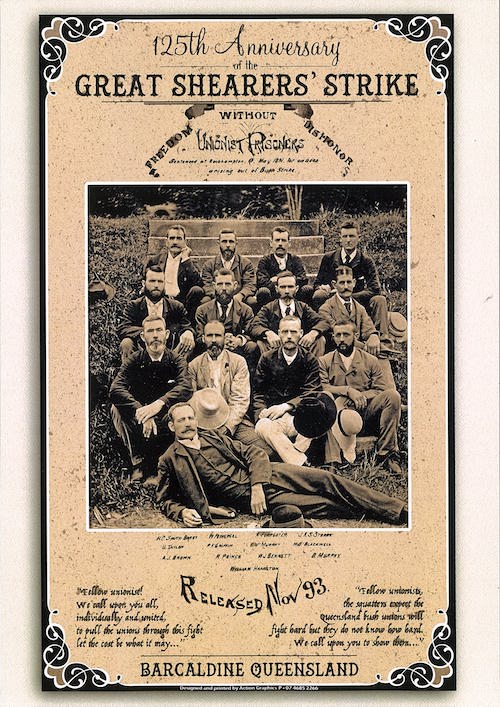
1895 In Paris in an elaborate public ceremony the blameless Captain Alfred Dreyfus was stripped of rank, humiliated, and trundled through the streets to become the sole inhabitant of Devil’s Island. Robert Harris’s novel about this affair will be discussed on the blog in a post.
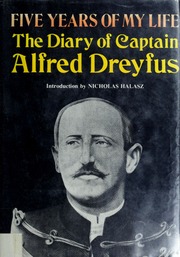
1914 In Detroit Henry Ford paid a minimum wage of $5 a day and shared with employees $10 million in the previous year’s profits.
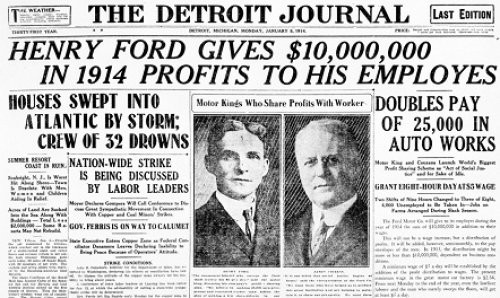
1937 In Lincoln (Nebraska) the first session of the new unicameral state legislature occurred. It is the only unicameral in the United States. (We will not mention Queensland.) George Norris led the campaign for the change which he started in Hastings as detailed in the discussion of a biography of Norris elsewhere on this blog.
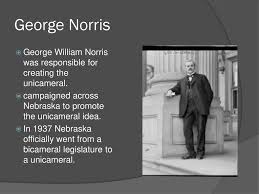
1968 The Prague spring began when Alexander Dubček became First Secretary of the Communist Party of Czechoslovakia. It ended with tanks on 21 August. We saw some of the sites when in Prague.

‘Seven Keys to Baldpate’ (1947)
IMDb runtime of one hour and four minutes, rated 6.1 by 209 cinematizens
Genre: Old Dark House
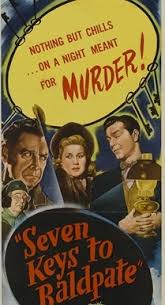
Verdict: Shiver!
On a speeding train Spectacles is typing away on a barely portable typewriter. He has pages and pages of a manuscript. Just as the train slows for his two-minute stop at Asquewan Junction the lights go out in his first class compartment and….. the manuscript disappears. He shrugs off the loss of hours of work and disembarks. (!)
‘He shoulda saved to the Cloud,’ chorused the fraternity brothers.
Unlike Spectacles, viewers saw a dainty female hand turn off the light switch before the manuscript went poof.
At the Asquewan Junction depot a blizzard rages. As Spectacles prepares to walk ten miles to the Baldpate Inn, Blondie appears and warns him not to go because ‘It’s dangerous.’ She then takes refuge in the ladies’ room.
To abridge, Spectacles is a well published writer of ‘mysteries of the intellectual sort’ who had complained of distractions throwing him off schedule. Encouraged by Ellery Queen, he bets his publisher $5,000 he can finish a novel in a single night of uninterrupted work. The publisher called this bluff by offering him the only key to the empty Baldpate Inn. The inference is that the publisher wants the book finished, but he does not want to lose the $5000 bet, so he sent along Blondie to gum up the works.
Far from being vacant Spectacles finds a sinister European-accent in residence at Baldpate Inn claiming to be the caretaker. To make matters ever more menacing, European-accent wears an ascot! This is serious.
Blonde fetches up at the Inn, too, in need of shelter from the blizzard, she says, but she soon blows her cover and Spectacles starts to work when he realises the trick. Nothing will stop him from the work!
As more and more stereotypes show up, the tough moll, the hoodlum, the fence, the whiner, and the brain it seems there are a lot of keys to the Baldpate Inn out there. But Spectacles thinks all of these people have been hired to disrupt him. With that ego he should go into politics.
With about eight people in the empty Inn the villainous stereotypes start murdering each other. It seems there is a stash of jewels and a huge payoff going. They met there on the assumption the place would be empty. Now there is no room at the Inn.
There are satisfying numbers of creaks and moans in the Old Dark House, sliding panels, hidden doors, and the other accoutrements of mystery homemaking. As Spectacles begins to realise there is more at stake than his ego, he confronts situations such as he has written in his books, only to find that the responses he imagined on paper don’t cut it in reality. That is a nice running gag. I took it to be a jocular reference to his alter ego Ellery Queen.
Another running gag is his repeated attempts to start his next novel by typing a title page which starts as ‘One Key to Baldpate’ and by the end is ‘Seven Keys to Baldpate’ and counting.
Loose ends, there are a few, the missing manuscript pages from the train are never again mentioned! Gasp. While the name ‘Baldpate’ would seem to be a joke, nothing is made of it in the story.
This is a remake of a version done in 1937 which is also on You_Tube along with an earlier 1929 version. There were silent versions still earlier. Evidently a tried and true story for which the fees had been paid. I tried the 1937 version but found the audio out of sync and lost interest.

The original story was by Charles Chan’s creator Earl Derr Biggers.
Lew Landers directed in the house style of RKO, i.e., fast and furious. Landers has a 150 directing credits on the IMDb with six or more B movies a year. Philip Terry played Spectacles to a T. There is some goss on him in the discussion of ‘Double Exposure’ (1944) elsewhere on the blog. The assorted character actors were fine until they got bumped off. Harry Harvey as the local police chief is a delight as he applies common sense to the denouement.
4 January
1847 Using the masculine pseudonym Ellis Bell, Emily Brontë submitted the manuscript of “Wuthering Heights” to a publisher who had enough sense to publish it.
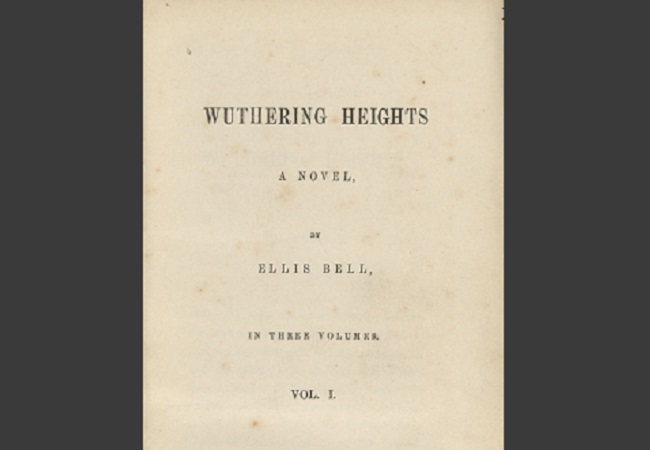
1965 In the State of Union address to Congress President Lyndon Johnson outlined the Great Society with a long list of measures that galvanised the nation – for a time – into a War on Poverty. Robert Caro’s magisterial biography of LBJ is discussed in other posts on this blog.

1999 For the first time since Charlemagne’s reign in the ninth century, Europe had a common currency when the “euro” became a financial unit in corporate and investment markets. This was the first step to the currency and coin Euro on 1 January 2000. The name had been decided in 1995.

2004 NASA’s rover ‘Spirit’ landed on Mars and it stopped transmitting in 2011, but its sibling, ‘Opportunity,’ just won’t shut up. Below is the first picture that Spirit sent home. N.B. both were designed to last six months. Both overachieved on the KPIs. No low-bid contractors were involved, evidently.

2007 Nancy Pelosi became the speaker of the House, the first woman to hold this post, which made her second in the line of succession for the office of President after the Vice-President. As of today, she’s back!

3 January
1521 Pope Leo X ex-communicated Martin Luther. In 1962 on the same day Pope John XXIII (pictured below) ex-communicated Fidel Castro.
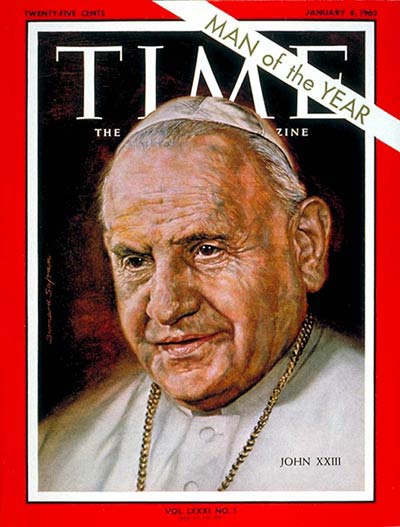
1872 Elijah McCoy, whose parents were slaves and took the underground railroad to Canada, got U.S. patent no. 129,843 for a lubricating device that allowed steam locomotives to run without stopping for lubrication. Legend holds that his invention worked so well that machine operators wary of cheap substitutes often requested “the real McCoy.” (There are competing legends that attribute the phrase to others.)

1929 Don Bradman scored 112 v England at Melbourne Cricket Ground – his first Test century with twenty-eight more to follow in a spectacular career.
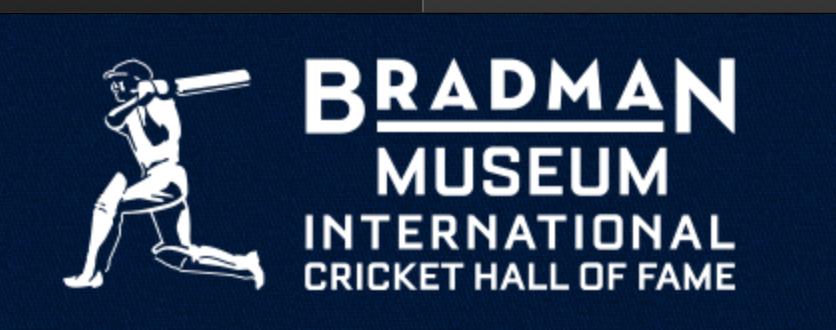
1938 President Franklin Roosevelt became patron of the March of Dimes to fund research into polio and to assist those afflicted. Dr. Jonas Salk was its research director. When we went to the movies in the 1950s we always put all of the dimes in our pockets into the collection cups for the March of Dimes passed around by ushers like church collection plates. I suppose today the anti-vaxxers would steal them because God told them to do so.

1996 The first clamshell flip mobile phone, the Motorola StarTAC, went on sale. It was the first cell phone to have a screen. Eventually sixty million were sold. No doubt the design was influence by Star Trek communicators.

2 January
1839 In France Louis Daguerre took the first photograph of the Moon, as below. His name gave us the Daguerreotype for a kind of photograph.

1890 In D.C. President Benjamin Harrison appointed Alice Sanger to be the first woman on the White House staff. He also appointed Frederick Douglass to be US ambassador to Haiti. I expect the White House cooking and cleaning staff had included women, but Sanger was an office worker of some sort. Little is available about her apart from the appointment. It was a time when agitation for the vote for women was high and perhaps the appointment was intended to mollify that constituency a little. Likewise the agitation for black rights was strong and perhaps Douglass’s appointment was a sop to that. No image of Alice Sanger could be found. Below is Frederick Douglass looking like an Old Testament prophet bringing the word from the wilderness.

1893 In Chicago the World’s Columbian Exposition opened. It was notable for the use of electricity for illumination whether in day or night to make it a White City in a second sense. All the buildings were painted white and at night it was illuminated by electric lights. A book about ‘Chicago’s Perfect Cities of 1893’ (1991) is discussed elsewhere on this blog.
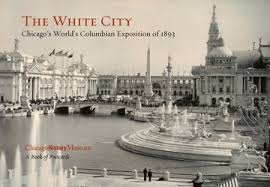
1906 In Brooklyn Willis Carrier patented the world’s first air conditioner. Why did he not get a Nobel Prize? Peace, medicine, physics, or all of the above? That is a mystery to me. Have you heard people who say they have air conditioning in the home or office, but ‘try not to use it.’ I have. My reply is to say the same about the flush toilet. That stops the show.
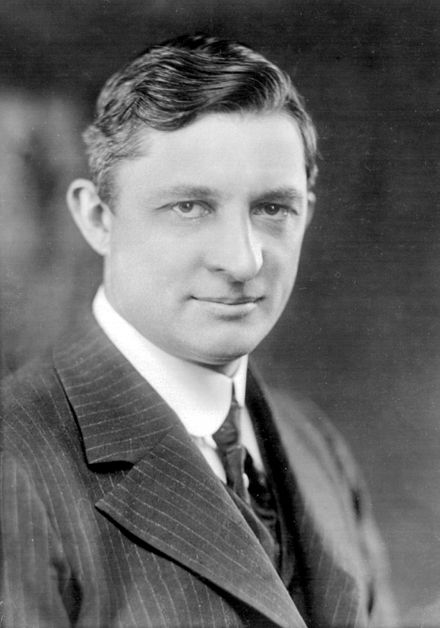
1922 In D.C. Albert Fall, the Secretary of the U.S. Department of Interior, resigned in response to public outrage over the Teapot Dome scandal. Like many others in the administration of Warren Harding he had been selling public assets to cronies for enormous profits to himself. Has a contemporary ring to it does it not. Rumour has it that Albert Fall is one of President Tiny’s heroes.
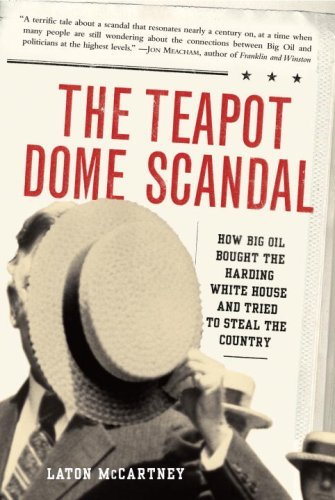
‘An Officer and a Spy’ (2014) by Robert Harris
Good Reads meta-data is 429 pages, rated 4.2 by 17,737 litizens.
Genre: Novel
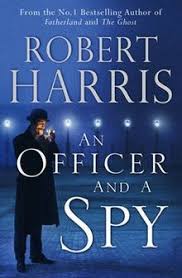
Verdict: An incredible story well told.
This is a novel about the l’affaire Dreyfus of 1894 in which the blameless Alfred Dreyfus (1859–1935) spent five years in solitary confinement on Devil’s Island in a prison built especially for him. His punishment took many additional forms. Were that not enough he spent another five years in a mainland prison.
His crime was to be Jewish. The accusation was that he had given military secrets to the Hun. It was but a generation since the humiliating French defeat in the War of 1870 by Prussia and the Hun was detested.
That detestation was crucial because Dreyfus’s second crime was to be from Alsace. When Alsace was ceded to Prussia at the end of the war, the population had to choose. Stay and be German, or be French and evacuate. His family chose to be French and left Alsace. In the convolutions that followed this choice was taken as evidence that he was a sleeper agent of some sort.
His third crime was to be well off, and not dependent on his army income as a captain. This made fellow officers envy him, ready and willing to be believe the worst of him to explain why he had money and they did not.
The fourth and most significant crime was to refuse to confess to something he did not do to shield the honour of the army. Its incompetence and stupidity certainly needed shielding.
It began with a scrap of paper purloined from the German embassy in Paris. It had been torn into bits and when it was pieced together the inference from it was that it referred to the passing of French General Staff secrets to the Germans.
Two questions arouse immediately. First, who could have done this deed. The second was who would do this. It could have been done only by an officer with access to the General Staff files. It would be done by a Jew. Dreyfus met both criteria. Guilty! (At times it was also alleged that as an Alsatian of German descent he was loyal to Germany. That second order point was used to explain his motivation since no money seems to have changed hand, and he did not need it. But Jews betray because it is in their blood.)
Once he had been identified no further investigation occurred. Rather all energy went into convicting and punishing him. A very great deal of expense went into his punishment by creating a prison for him alone on the otherwise uninhabited Devil’s Island near Cayenne.
Later a French counter-intelligence officer stumbled on a loose end and began to tug on it. The wagons went into a circle and the cover-up became more and more extensive and intense. An effort was made to send this officer, who just would not let it go, on a suicide mission in North Africa, but his local commander stalled that. The officer’s determination was painted as an effort to discredit the army, not to see justice done to Dreyfus, or, by the way, to apprehend the real villain who was still at large and still selling.
All in all it makes Watergate seem like a student prank.
The organisational pathologies of the army bureaucracy are mercilessly dissected in these pages. While senior officers plotted against each other for promotion, they united against outsiders who might disturb the playing field on which they schemed against each other.
There was no big bang to clear Dreyfus but a numbing series of re-trials, appeals, inquiries, and more that gradually eroded the conspiracy of the cover-up. The conspirators had to prop up the lies for ten years in both military, civil, legal, and popular arenas and in so doing they made mistakes. It is hard keeping a tissue of lies straight. The truth began to leak out, drop by drop.
But a quick spin around web sites indicates that there are today plenty contemporary nut jobs, when they take time off from denying the Holocaust, who proclaim Dreyfus’s guilt. President Tiny would doubtless declare them good people.
It is implied in these pages that at least two weak links in the cover-up were murdered as cut-outs. Certainly many involved with the matter died prematurely. Others went into voluntary exile. One lawyer for Dreyfus was shot on the way to the court and the presiding judge refused a recess to allow the defence to reorganise. A great many junior officers were suborned into lies and calumny to protect their superiors.
Only in 1906 was Dreyfus exonerated and restored to rank. Likewise the counter-intelligence officer who himself had been imprisoned was restored to rank and promoted. Both served in the Great War, 1914-1918.
I never did fathom who was responsible for the two murders. The shooting of the lawyer was perhaps a self-appointed fanatic. Although, maybe not.
Nor did I ever did fathom the behaviour of the real wannabe spy, the dissolute and brazen Ferdinand Esterhazy.
Finally, I could not quite understand how so many junior officers were suborned into the cover up with nary a leak. Suborning I get but without a leak? That part I don’t.
I do not doubt that these things happened but the novel sheds no light on them.
In keeping with the whole sad spectacle most of the original evidence has since disappeared, says the Wikipedia entry. That word ‘disappeared’ would be a euphemism for the word ‘destroyed.’ There is no longer any bottom to touch.
While I am picking nits the novel is written in the first person singular in the present tense, and I almost stopped reading it on page five because of that. Only my experience with reading and valuing previous novels by Robert Harris kept me at it, though on every page I regretted that choice on his part. For readers who do not know what the first person singular in the present tense means I recommend tuning into Channel 7Mate where the question will never arise.
I had wanted to read a biography of Dreyfus sometime ago and came up with Jean-Denis Bredin’s ‘The Affair: The Case of Alfred Dreyfus’ (1983) by a French historian so I tried that. Mistake. It started in the middle with the writing test that Dreyfus was tricked into doing. I could never get a foothold on what was going on so I stopped.
1 January
45 B.C. In Rome 1 January became the first day of the calendar year with the adoption of the Julian Calendar based on the solar year. Prior to that the New Year had been marked on 1 March. It had been commissioned by Julius Caesar. John Maddox Roberts tells this story through a krimi in’ The Year of Confusion (SPQR XIII).’
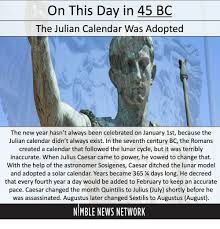
1863 In Nebraska farmer Daniel Freeman submitted the first claim under the new Homestead Act for a property near Beatrice. The act opened the West and immigrants followed. The Act gave land to those who would improve it by the mixture of their labour. Sounds like John Locke.
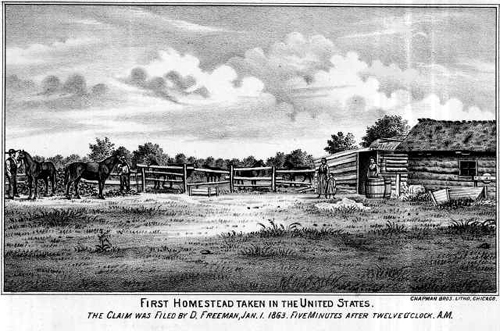
1892 In New York City harbour fifteen-year old Annie Moore from Ireland became the first of the more than twelve million immigrants who passed through the Ellis Island Immigration Station in its sixty-two years of operation. Kate paid it a visit once upon a time. See the discussion of the film ‘Brother from Another Planet’ (1984) elsewhere on this blog for an update on Ellis Island.
1901 In Melbourne the Commonwealth of Australia was proclaimed. Tom Roberts was commissioned to paint the scene and below he is at work.

1962 In London the Beatles auditioned for Decca Records, but the company instead signed Brian Poole & the Tremeloes. The executive who made this call no doubt paid himself a bonus.
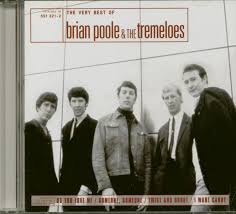
31 December
1660 In London Queen Elizabeth I granted a Royal Charter to the Company of Merchants of London Trading with the East Indies, later know as the East India Company with its own navy and army it became a law unto itself while providing sinecures to James and John Stuart Mill to write their books.

1879 In Honolulu the cornerstone was laid for the Iolani Palace which was the only royal palace in the United States. We have been through it. Jack Lord used to be there in Hawaii 5-Oh.

1929 In Montréal Guy Lombardo and the Royal Canadians played “Auld Lang Syne” as a New Year’s Eve song for the first time. The group originated in London, Ontario. Been there and Montréal, too..
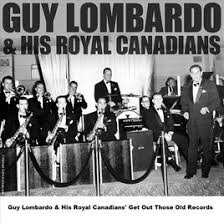
1935 In Chicago Charles Darrow was granted United States patent 2,026,082 for the board game Monopoly. Play money was a big hit when there was so little of the real thing to go around in the Great Depression. It was such a success that it crossed the Atlantic in the following year. The poster below marketed the game in England in 1936. Played it more than once.
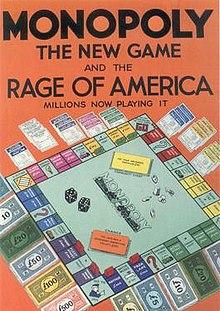
1999 The millennium observed around the world, while pedants declaimed it would be at the end of 2000. Despite the hype, the bug did not show.
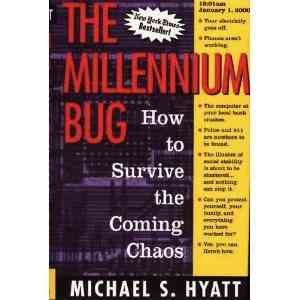
30 December
1853 In Mexico City the coercive Gadsden Purchase, or Gadsden Treaty, was concluded. It was the last piece of territorial USA brought under the flag.

1916 In Saint Petersburg Grigori Rasputin, a self-styled Russian holy man, was murdered by Russian nobles eager to end his sway over the royal family. We have been the room where the deed was started but not done.
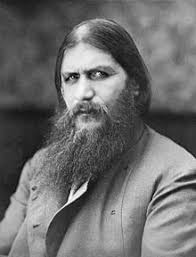
1922 Moscow: The USSR established in a ceremony in Bolshoi Theatre comprising a confederation of Russia, Belorussia, Ukraine, and the Transcaucasian Federation. We saw a ballet at the Bolshoi and this plaque on the wall of the building.
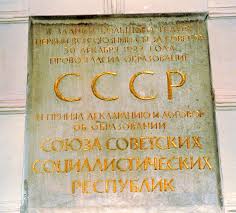
1936 In Flint Michigan members of the United Auto Workers staged the first sit-down strike on history at the Fisher Body Plant. They said the idea came from Mahatma Gandhi in India.

2011 In the South Pacific Ocean several island natons changed time zone and moved west of the international dateline to align the time zone with trading partners, Australia and New Zealand. In doing so, they skipped December 30 and moved directly from December 29 to December 31. The line in the picture below used to be straight. There must be a backstory about moving that line. Who manages the world’s time zones? And how is it done?

29 December
1170 Canterbury England Thomas Becket was murdered in the Cathedral to please King Henry II. Plays by T. S. Eliot and Jean Anouilh brought this story back to light .

1851 In Boston the first chapter of the YMCA was formed. Pictured below is the Boston ‘Y’ I frequented in 1979-1980 when a visiting fellow at Harvard.

1890 The massacre at Wounded Knee at Pine Ridge in South Dakota occurred. Been there and I have the dream catchers over my iMacs to prove it. The Sioux I bought them from assured me they were made by his wife and not in a factory in China. He volunteered this; I did not ask.
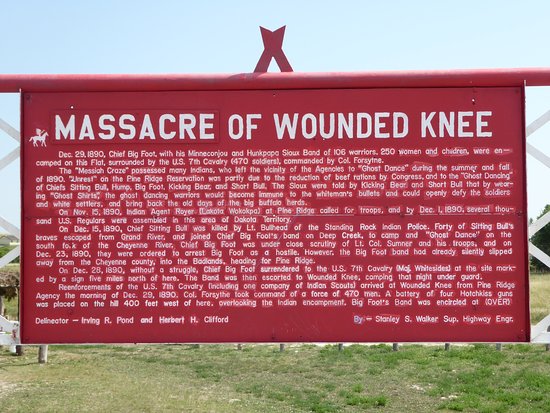
1967 On television the Star Trek episode ‘The Trouble with Tribbles’ aired with Mr Pomfritt, third from the left.

1969 Curt Flood’s lawyers surrounded that he would challenge Major League Baseball’s reserve clause and return to accept his trade to Philadelphia. His subsequent victory re-made all professional sports. Every player since then owes him a lot.

